- Home
- Information
- Buying Guides
- HDMI Cables Buying Guide
Take the
guesswork out of
HDMI Cables
Cable clutter is a thing of the past thanks to digital technology. Where once you needed multiple cables to deliver audio and video between your TV or monitor and other gadgets, you can now do the same with a single cable: the HDMI cable. Learn all about this cable in our handy buying guide.
HDMI Cable Basics
HDMI (high-definition multimedia interface) cables are used to set up home theatre equipment and connect TVs, monitors and projectors to devices such as laptops, desktops, Apple TV, media players, gaming consoles, Blu-ray players, set top boxes and streaming devices.
These cables transmit both video and audio signals, so you no longer need separate cables for sound and visuals, cutting down on clutter.

HDMI ports are usually located on the back or side of your devices. You may have multiple ports, which are clearly labelled for your convenience: HDMI 1, HDMI 2, etc, or Input 1, Input 2, etc. If you have more devices than ports, you can buy a stand-alone HDMI switch to add the necessary number of devices.
To connect the TV to your devices, simply run the HDMI cable from your TV’s HDMI input to the device’s HDMI output.
You may notice product descriptions mentioning ‘female’ and ‘male’. The word ‘female’ refers to the HDMI ports, while ‘male’ refers to the connector plugs on the cable.
Types of HDMI Cables

Standard
Supports 720p or 1080i video resolutions and suitable for most home applications. This is ideal for standard TVs and DVDs that do not display higher than 1080i.
View Standard HDMI Cables
Standard with Ethernet
Allows two Ethernet-enabled devices to transmit Ethernet signals over the HDMI cable. Has the same capabilities as standard HDMI, but also has a dedicated data channel for device networking, allowing you to connect your devices to the internet without needing a separate ethernet cable. This feature only works if both connected devices are HDMI Ethernet Channel-enabled.

Standard Automotive
Suitable for vehicle connectivity. Enables you to enjoy HD video from your personal media player, HD camcorder and other digital sources while on the go.

High speed
Supports the latest 4K Ultra HD resolutions and the latest advancement in picture quality such as HDR (High Dynamic Range).
View High Speed HDMI Cables
High speed with Ethernet
Allows two Ethernet-enabled devices to transmit Ethernet signals over the HDMI cable. Has the same capabilities as high-speed HDMI, but also has a dedicated data channel for device networking, allowing you to connect your devices to the internet without needing a separate ethernet cable. This feature only works if both connected devices are HDMI Ethernet Channel-enabled.
View High Speed HDMI Cables With Ethernet
Premium High Speed
Available as a Premium High Speed HDMI Cable and Premium High Speed HDMI Cable with Ethernet. Designed and certified for ultra-reliable performance for 4K Ultra HD including advanced features such as 4K at 60 frames per second, HDR and expanded colour spaces. They can be identified by an Anti-Counterfeiting Authentication Label. The Ethernet feature allows two Ethernet-enabled devices to transmit Ethernet signals over the HDMI cable.

Ultra High Speed
Ensures ultra high-bandwidth dependent features are delivered including uncompressed 8K video with HDR. Supports up to 48 Gbps bandwidth and features exceptionally low EMI (electro-magnetic interference) which reduces interference with nearby wireless devices. Also supports the HDMI Ethernet channel. This HDMI cable is backwards compatible and can be used with the existing installed base of HDMI devices.
Choosing the Right HDMI Cable
Your choice of cable will depend on the HDMI devices you have – they need to be compatible with the features you want.
For instance, if you want 1080p video resolution, both your TV and source device, such as a DVD player or set-top box, must be capable of 1080p displays. If your TV is capable of 1080p resolution but the source device is only capable of 720p, your TV will display 720p video even if you have a high speed HDMI cable.
High speed HDMI cables will support all current 4K Ultra HD formats and advanced features such as HDR.
For a HDMI cable that has been rigorously tested and certified under the Premium HDMI Certification Program, choose a premium high speed cable.
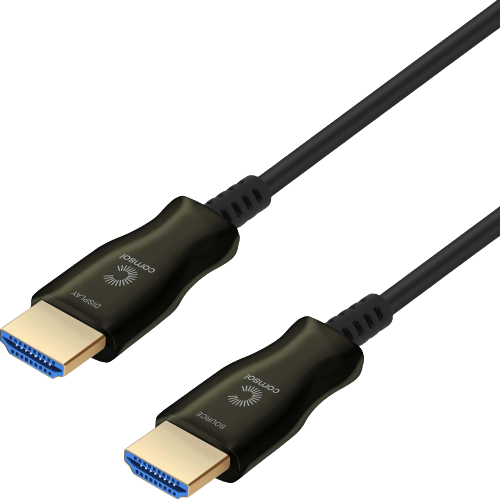
Regular HDMI Cables
Also known as HDMI Type-A, regular HDMI cables are used for home theatre equipment and TV/monitor connections. The standard HDMI connector measures 14 x 4.55mm.
Shop NowMini HDMI Cables
These cables, also known as HDMI Type-C, are used for devices such as DSLR cameras, laptops and standard-sized tablets. The mini HDMI connector measures 10.42 x 2.42mm.
Shop Now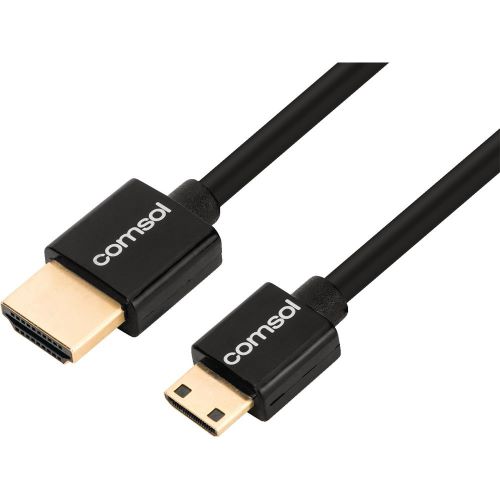
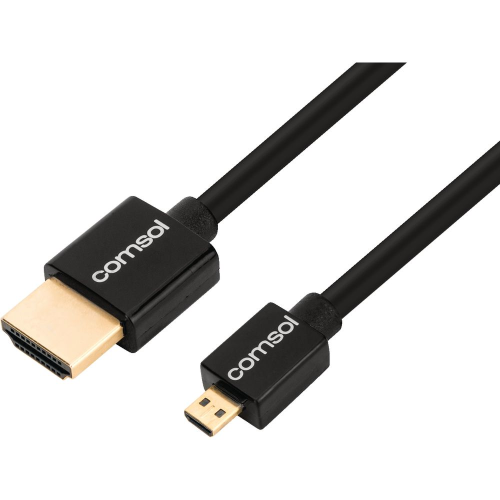
Micro HDMI Cables
Also called HDMI Type-D, these cables are the smallest of all and are used for smaller devices such as digital cameras, ultra books and smaller tablets. The micro HDMI connector measures 6.4 x 2.8mm.
Shop NowIs HDMI the same as DisplayPort, DVI and VGA?
HDMI, DisplayPort and DVI are all digital connections while VGA is an analog connection.
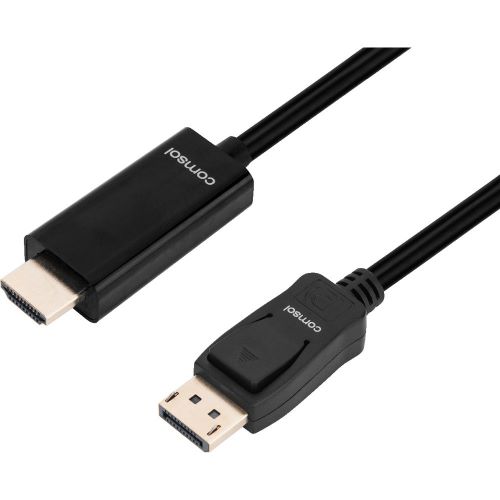
DisplayPort
DisplayPort and Mini DisplayPort were originally developed to connect computers to monitors, but is now available on other devices such as laptops, tablets and digital TVs. It’s a newer standard than HDMI, capable of a higher refresh rate and a more stable AV connection. DisplayPort is not as ubiquitous as HDMI, but can be found on Apple’s iMacs and MacBooks as well as Microsoft’s Surface Pro. You can connect HDMI devices to DisplayPort connections using an adapter.
Shop NowDVI
DVI (Digital Visual Interface) carries video signals only, not audio, unless it’s connected with a DVI to HDMI cable or adapter. DVI is not capable of 4K resolution, and is declining in use. If you have a device with a DVI connection, you can connect it to HDMI connections using an adapter.
Shop Now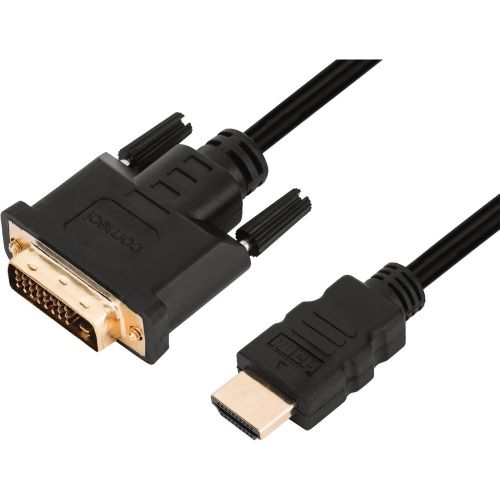
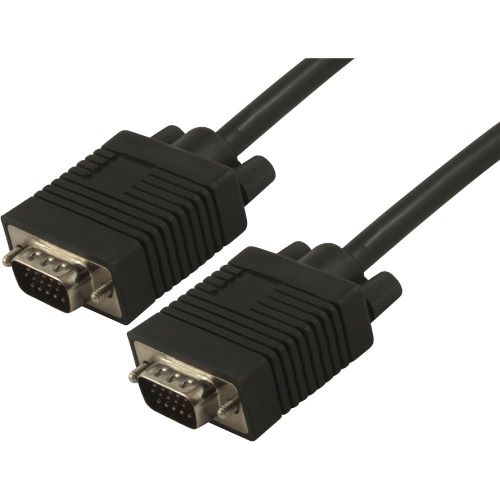
VGA
VGA (Visual Graphics Array) is a video-only connection used in older laptops, projectors and displays. It’s rarely seen on TVs now, but is still useful if you have legacy systems or equipment. You can use an adapter to connect HDMI devices with a VGA connector.
Shop Now

 has the facebook
has the facebook
